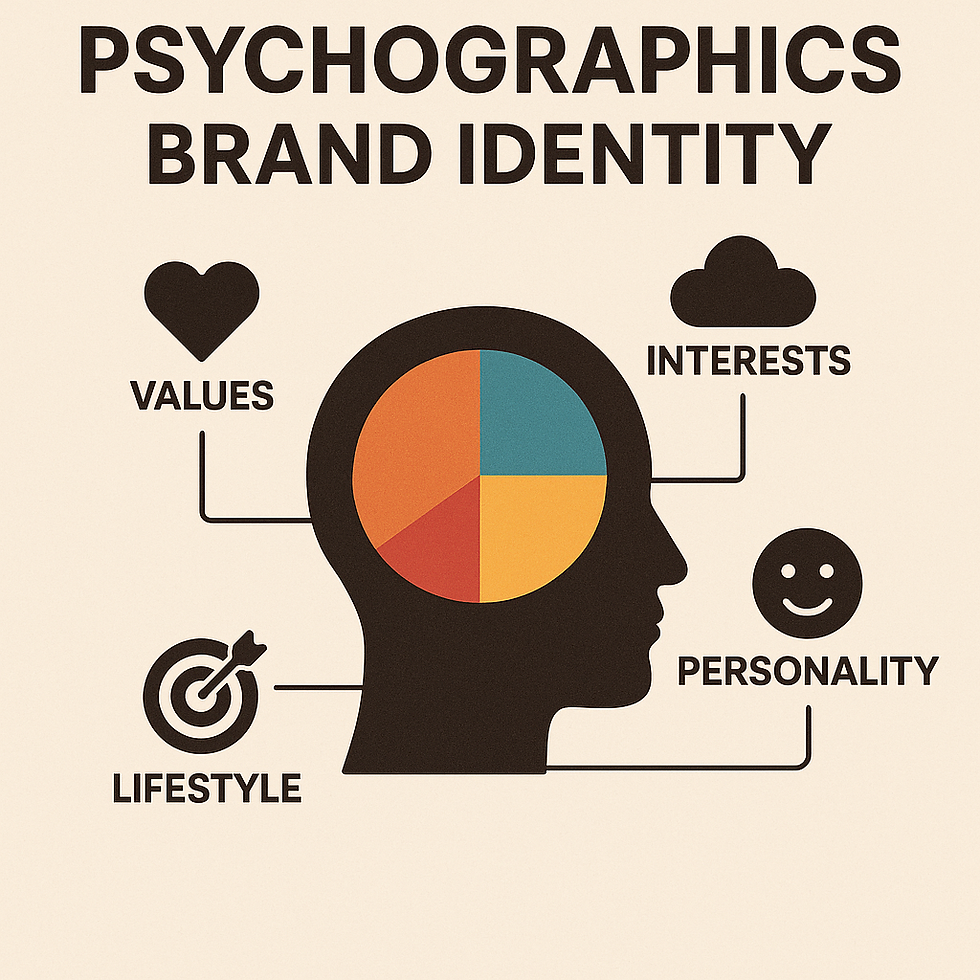Unveiling the Power of Psychographic Branding: Beyond Demographics to Deeper Connections
- MediaRock Communications Ltd

- Jun 13
- 4 min read

In today’s competitive marketplace, understanding consumer behavior goes beyond basic demographics like age, gender, or income. To truly connect with an audience, brands must explore the psychological attributes that influence buying decisions. This is where psychographic branding comes into play, capturing the essence of how consumers think, feel, and behave.
Psychographic branding has the power to create emotional connections that resonate with consumers on a personal level. This blog post will explore the intricacies of psychographic branding, its importance, and practical strategies for implementing it in your brand’s marketing efforts.
Understanding Psychographics
Psychographics refers to the study of consumers based on their psychological attributes, which include personality traits, values, interests, attitudes, and lifestyle choices. Unlike demographics, which categorize consumers by observable traits, psychographics digs into the “why” behind their behaviors.
For instance, two women in their 30s may share similar income levels and job titles but make very different purchasing decisions. One might prioritize organic products due to a strong belief in sustainability, while the other chooses convenience over eco-friendliness. By using psychographic insights, brands can craft experiences and messaging that appeal to these deeper motivations.
The Importance of Psychographic Branding
Understanding psychographics is vital for several reasons:
Enhanced Targeting: Brands can tailor their marketing strategies based on lifestyle and values, moving beyond basic demographic segments. For example, a study by McKinsey found that brands using psychographics saw a 15% increase in their targeting precision.
Stronger Emotional Connections: Brands that align their messaging with consumer beliefs and values can achieve higher engagement. According to research, emotionally connected customers are 44% more likely to recommend a brand to others.
Improved Customer Insights: Psychographics offer a holistic view of the consumer, providing insights into motivations and pain points. This understanding is invaluable for product development, allowing brands to create offerings that truly meet customer needs.
Competitive Advantage: Since many brands still rely mostly on demographic data, adopting a psychographic approach allows brands to stand out. Research shows that companies that differentiate themselves in this way can boost market share by up to 30%.
Implementing Psychographic Branding Strategies
1. Conducting Psychographic Research
The first step to implementing psychographic branding is thorough research. Brands can use surveys, interviews, and focus groups to gather insights into consumer motivations and behaviors. Online tools, especially social media analytics, can provide valuable data about audience interests and preferences.
Asking key questions can uncover values, lifestyle choices, and motivations for purchases. This research can help develop comprehensive buyer personas reflecting not just who consumers are, but why they buy.
2. Creating Tailored Messaging
After gathering psychographic data, it’s time to craft messaging that directly speaks to the identified values and interests of the audience. This involves creating a brand narrative that resonates emotionally and encourages engagement.
For example, brands like Patagonia emphasize storytelling that highlights their commitment to the environment. This approach not only humanizes the brand but also positions it as part of the consumer's story.
3. Curating Brand Experience
A brand's experience should reflect psychographic insights at every touchpoint, including website design, customer service, social media interactions, and product offerings.
For instance, if a brand targets an audience that values health and wellness, showcasing products that promote a healthy lifestyle through blog posts or social media campaigns helps align with their values.
4. Track and Adapt
Psychographic branding is an ongoing process. Brands should continuously track consumer behaviors and adapt their strategies accordingly. Changes in social or economic climates can impact consumer psychology.
Collecting feedback through tools like customer relationship management (CRM) systems helps brands stay attuned to the evolving psychographic landscape.
Building Emotional Connections
At the heart of psychographic branding lies emotional connection. Consumers are drawn to brands that reflect their identities, struggles, and values. By prioritizing emotional engagement over transactional relationships, brands cultivate a loyal customer base that feels personally invested.
Successful brands illustrate this well. For example, Nike taps into the values of determination and perseverance, motivating consumers to see their purchases as part of their personal journeys.
Challenges in Psychographic Branding
Implementing psychographic branding can yield substantial rewards, but it comes with challenges:
Data Privacy: As consumers grow concerned about data privacy, brands must handle psychographic data responsibly and transparently.
Overgeneralization: It can be tempting to stereotype consumers based on psychographic data. Brands should maintain a nuanced understanding of their audience to avoid alienating potential customers.
Resource Intensive: Conducting thorough psychographic research and developing strategies can be demanding, requiring significant time, manpower, and investment.
The Path Forward
Psychographic branding is a powerful tool for creating deeper connections with consumers. By moving beyond demographics to understand the values and motivations driving purchasing decisions, brands can enhance their marketing strategies.
Whether through thorough research, crafting tailored messaging, or adapting to changing consumer behaviors, the key is to place the consumer at the heart of branding efforts. In a rapidly evolving marketplace, brands embracing psychographic branding can thrive, forming meaningful relationships that foster long-term loyalty.
Embrace the power of psychographic branding to unlock the potential for deeper, more authentic connections with your audience.








Comments